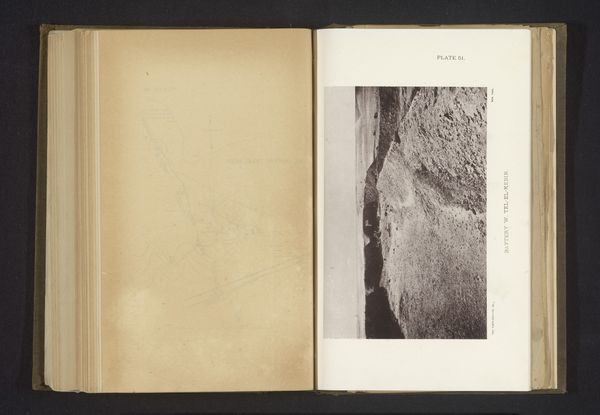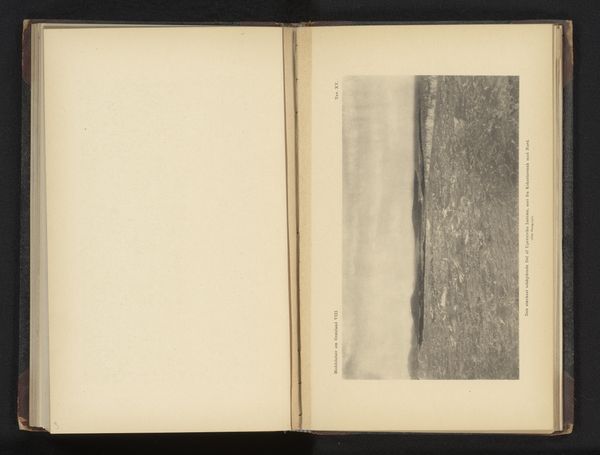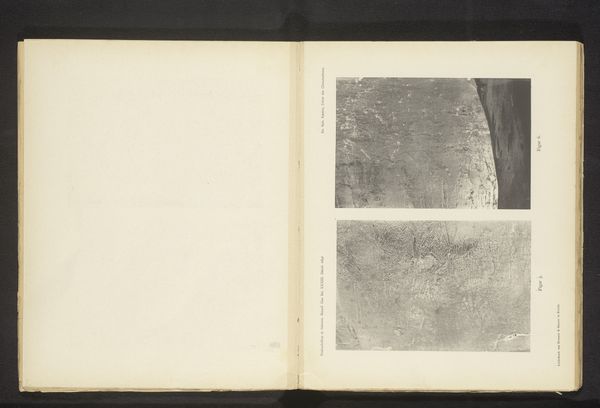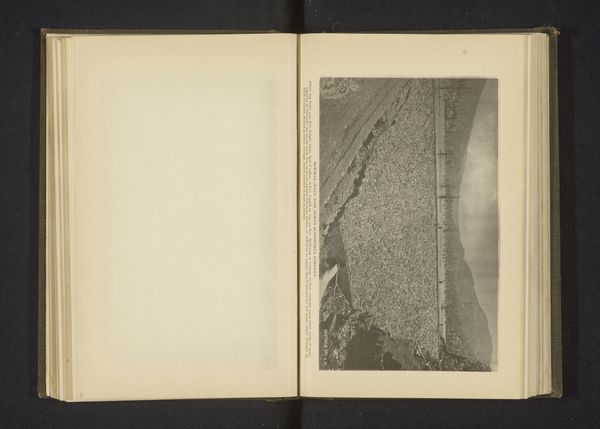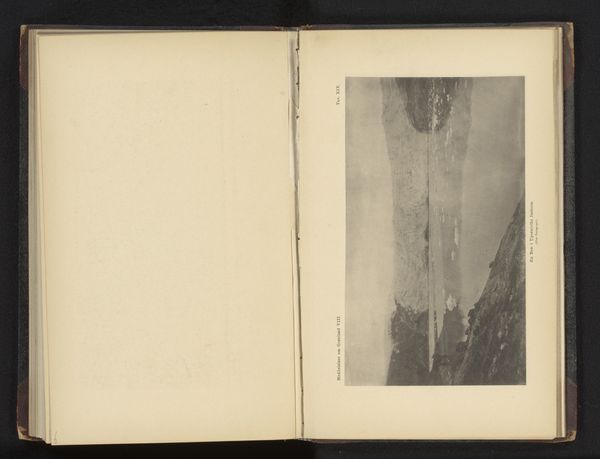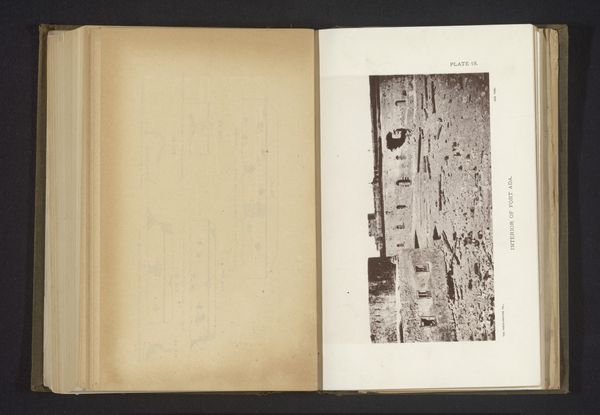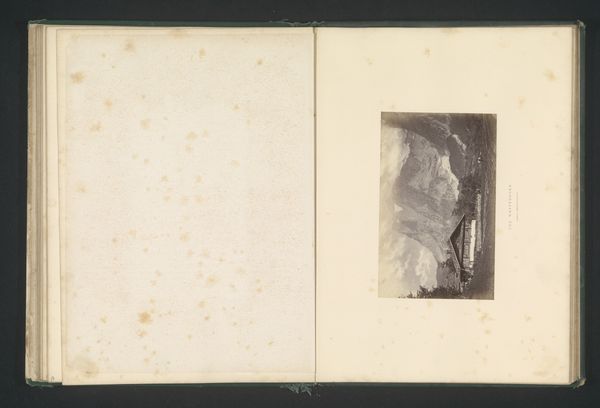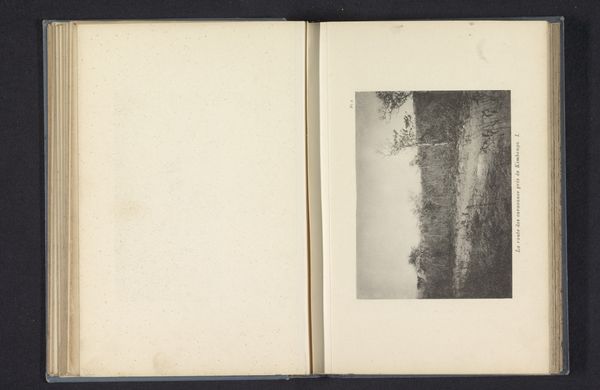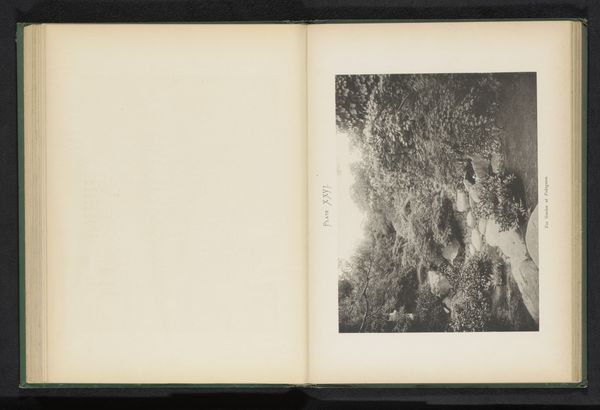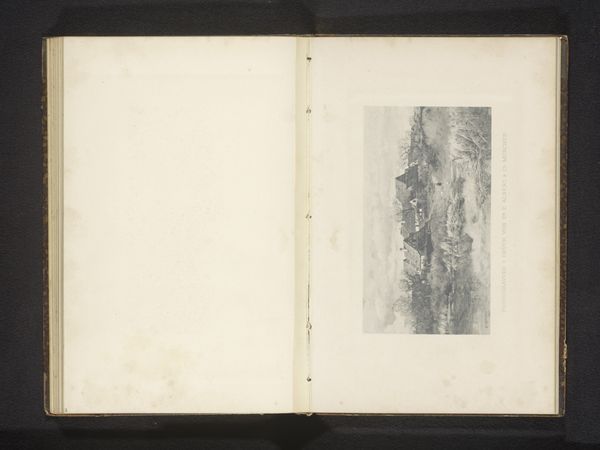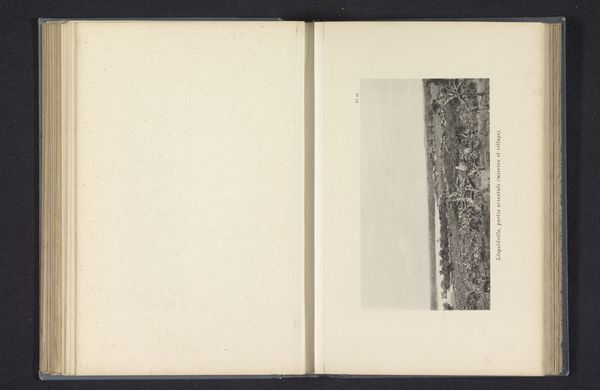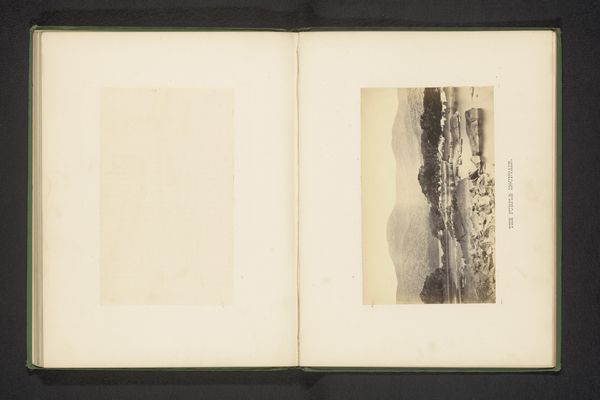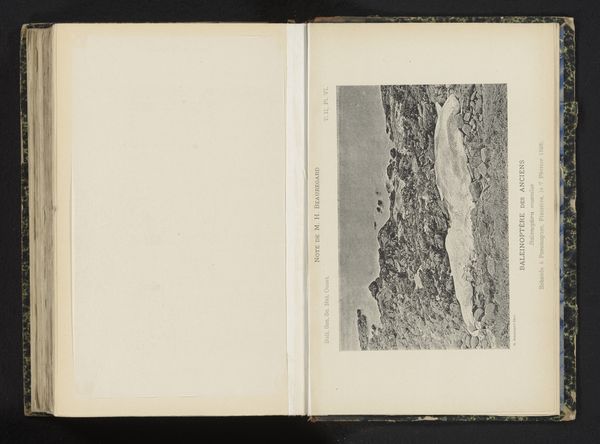
print, paper, photography, albumen-print
#
aged paper
#
homemade paper
# print
#
landscape
#
paper texture
#
paper
#
photography
#
orientalism
#
albumen-print
#
historical font
Dimensions: height 105 mm, width 164 mm
Copyright: Rijks Museum: Open Domain
Curator: Here we have an albumen print titled "Interieur van een redoute in Tall al Kabir met munitie op de voorgrond," which translates to "Interior of a redoubt in Tall al-Kabir with ammunition in the foreground." It's an anonymous work, dating from before 1885. The presentation itself is also interesting: the print is adhered to a bound page. Editor: It has an unsettling feeling. The grainy texture, the washed-out sepia tones… it’s almost like looking at a forgotten nightmare. A photograph of violence contained and bound within the neat, clean lines of a book. Curator: Yes, that juxtaposition is quite powerful. The albumen print, popular at the time, often romanticized the exotic “Orient,” yet here, it documents something much grimmer. It depicts an interior space – likely a fortification, considering the presence of munitions. Editor: This kind of Orientalist imagery can be deceptive. On one hand, the “documentary” aspect of photography lends itself to the rhetoric of scientific objectivity, while on the other hand, there's a clear power dynamic involved. This isn't just a neutral observation; it reflects colonial interests in a specific geographic space and, undoubtedly, in exerting power over it. What stories does the historical record neglect, in contrast to this supposed truth? Curator: Absolutely. What this picture shows and conceals reflects not only geopolitical concerns but also a deeper symbolism. "Redoubt," suggesting a final stronghold; ammunition, implying inevitable conflict. The very act of capturing and preserving this image suggests a desire to possess and understand this specific time and space. And the very materials point to an element of time: the aged paper, the historical font beside the photograph. The aesthetic language of this page design indicates its own time. Editor: That sense of capture is keen. We, the viewers, become implicated in this gaze across time and power, confronting how our perceptions of history are shaped and, indeed, distorted through such documents. Curator: Looking at it, I am reminded about how certain images come to stand in for entire cultures or eras, carrying layers of meaning far beyond their initial intent. Editor: Right. The power of images, both visually and symbolically, to define how we understand conflict, Orientalism, and representation continues to reverberate through history. The redoubt still echoes in culture.
Comments
No comments
Be the first to comment and join the conversation on the ultimate creative platform.
